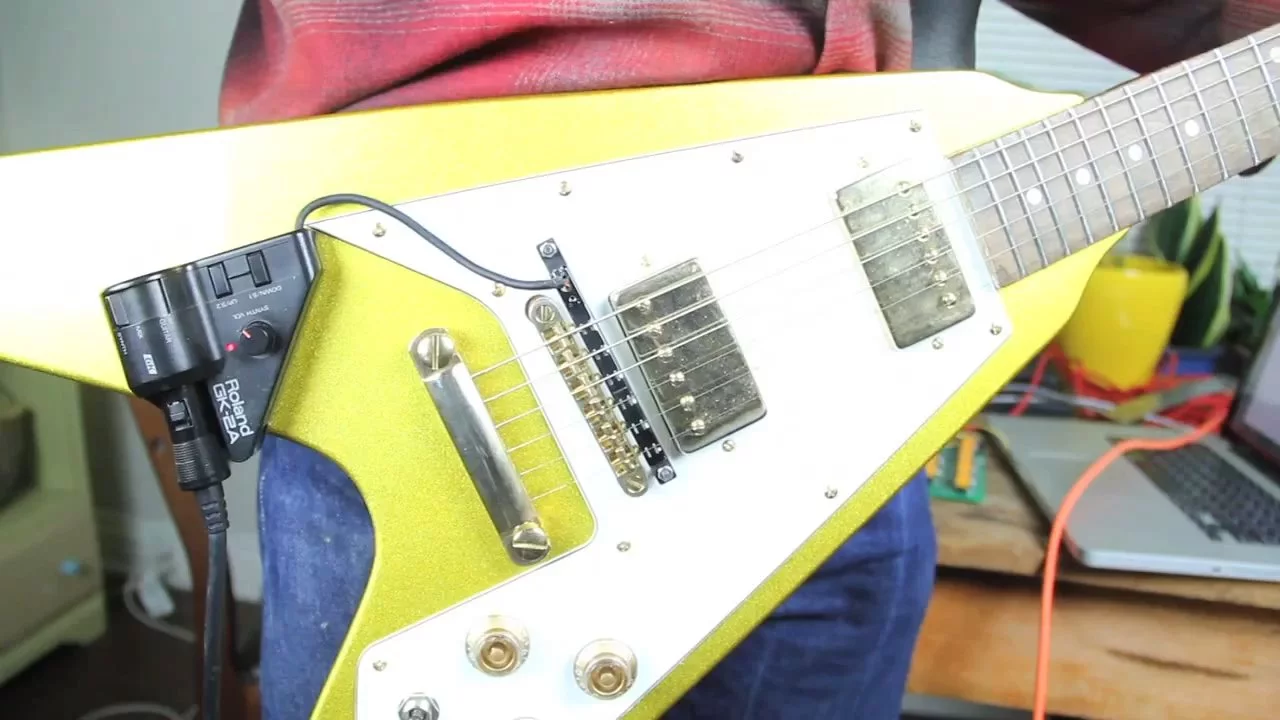I must confess that the more time I spend tapping away on a computer keyboard, the more my guitars sit ignored and unplayed in the corner. This is also something that troubled Wieden+Kennedy's David Neevel. Unlike me though, he decided to do something about it. With a little help from a Roland GR-33 guitar synth, an Arduino Uno, some electronics and custom code, he managed to trick his laptop into treating his Flying V as if it was a standard keyboard input.
Neevel says that the idea for the Email guitar has been buzzing around in his head for some time, but he was recently given time by his advertising agency employers to build a working system. It's been designed so that he could just plug the cable running from the electronics into a USB port and the guitar would simply be recognized as a computer keyboard.

He says that the system wouldn't work if he used the signal from the guitar's pickups, so he mounted a Roland GK-2A divided pickup onto his Flying V guitar that's able to send output from each string individually. This allows a fretted bottom E string, for example, to be mapped to a different keyboard keystroke than a D string at the same position on the neck.
The pickup feeds the signal into the GR-33, which sends it as MIDI output through an opto-isolator circuit to the Arduino board. The popular microcontroller board is hooked up to a relay board that Neevel had specially printed up.
He allocated keystrokes (including numbers, shift and delete keys) to fret positions on each string along the neck, and custom code is used to direct the signal to close an appropriate pair of relays when a note is played. This is then translated to keystroke output via the ripped out PCB of a USB keyboard. Finally, the setup is connected to the USB port of a computer, which "sees" the system as a standard keyboard and types the corresponding character onscreen.

To the casual observer, it might not look like the most efficient way to type an email, but can you imagine the words-per-minute output from someone like Tiago Della Vega or John Taylor?
Should you feel inspired to create your own Email guitar, perhaps to accompany Alec Smecher as he bashes out secret messages on his drums, you can download the Arduino code and read through the build notes via the source link. Meanwhile, watch Neevel walk through his system in the video below.
Source: David Neevel via Wieden+Kennedy









